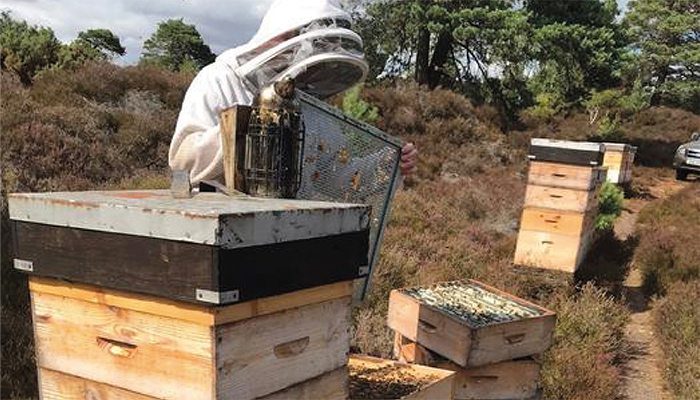
Credit: Cranfield University
DNA barcoding can accurately detect sugar syrup adulteration in honey, addressing a critical challenge in ensuring authenticity. The technique can identify adulterants at levels as low as 1 percent – which the researchers say is a significant improvement over traditional methods. DNA barcoding could help combat the growing issue of honey fraud in the food industry, where cheaper sugar syrups, such as corn, rice, and sugar beet, are added to dilute pure honey.
The study, led by Maria Anastasiadi, Lecturer in Bioinformatics at Cranfield University, UK, focused on developing a DNA barcoding method to authenticate honey by detecting the presence of specific DNA markers from common adulterants. The researchers tested a variety of UK honey samples collected from UK bee farmers, and simulated adulteration at different levels by adding syrups from various plant sources.
“DNA barcoding is a robust method which has already been applied for food authentication (for example, speciation of meat and fish); in fact, it is even one of the techniques which can be utilized to authenticate Manuka honey, so we know the method can be effective for botanical authentication of honey,” according to Anastasiadi and Sophie Dodds, co-author and PhD student, in an email exchange with The Analytical Scientist team. “Therefore, we wanted to evaluate how successful the method would be to detect residual DNA from sugar syrups.”
One of the main challenges for the researchers was DNA extraction. “Firstly, honey is a complex matrix, high in sugar content but also contains other metabolites such as phenolic compounds, enzymes, amino acids, VOCs, minerals and vitamins. Sugar syrups from various plant sources can also be complex,” says Anastasiadi, who also noted that plant DNA in both honey and sugar syrups is expected to be highly fragmented due to the extensive process underpinning their production.
“Optimizing DNA extraction for honeys and sugar syrups as well as their blends was of critical importance,” writes Anastasiadi. “Taking into account the complexities of the food matrices under consideration, we compared two DNA extraction kits, one specifically designed for foods and one for plants and selected the one that consistently showed stronger amplification for the plant DNA barcode (trnL P6 loop).”
Furthermore, to address the issue of degraded DNA, the researchers designed species-specific DNA markers, which targeted a short section of DNA, on regions which would have high copy number in the cell, to increase the chance of amplification.
Anastasiadi and Dodds are hopeful that the technique could be incorporated into current food testing processes, given that DNA barcoding is already used in routine analysis of food products, such as fish speciation, so most testing laboratories would already have the equipment and facilities needed to implement the test. “However, the method would need to go through a validation process in different labs to ensure it could be reproduced to the same level,” they write. “For the method itself the next step would be to evaluate honey samples of different countries of origin and blended honey, as currently only samples of UK origin have been assessed.”
The researchers are considering other applications – they are already developing new methodologies for other food products to identify adulterants and contaminants such as allergens in plant and animal-based foods. In terms of honey, they are developing DNA barcoding methods for botanical origin detection. “We envisage that the method can be used for multiple authenticity targets where only one sample preparation is needed – reducing analysis time and costs,” write Anastasiadi and Dodds. “These targets could include other botanical sources, other types of plant-based sugars, detecting GMO events or even honeybee speciation. Moreover, the method could be applied to non-authenticity targets such as detecting microbial contaminations or evaluating bee health and disease.”




